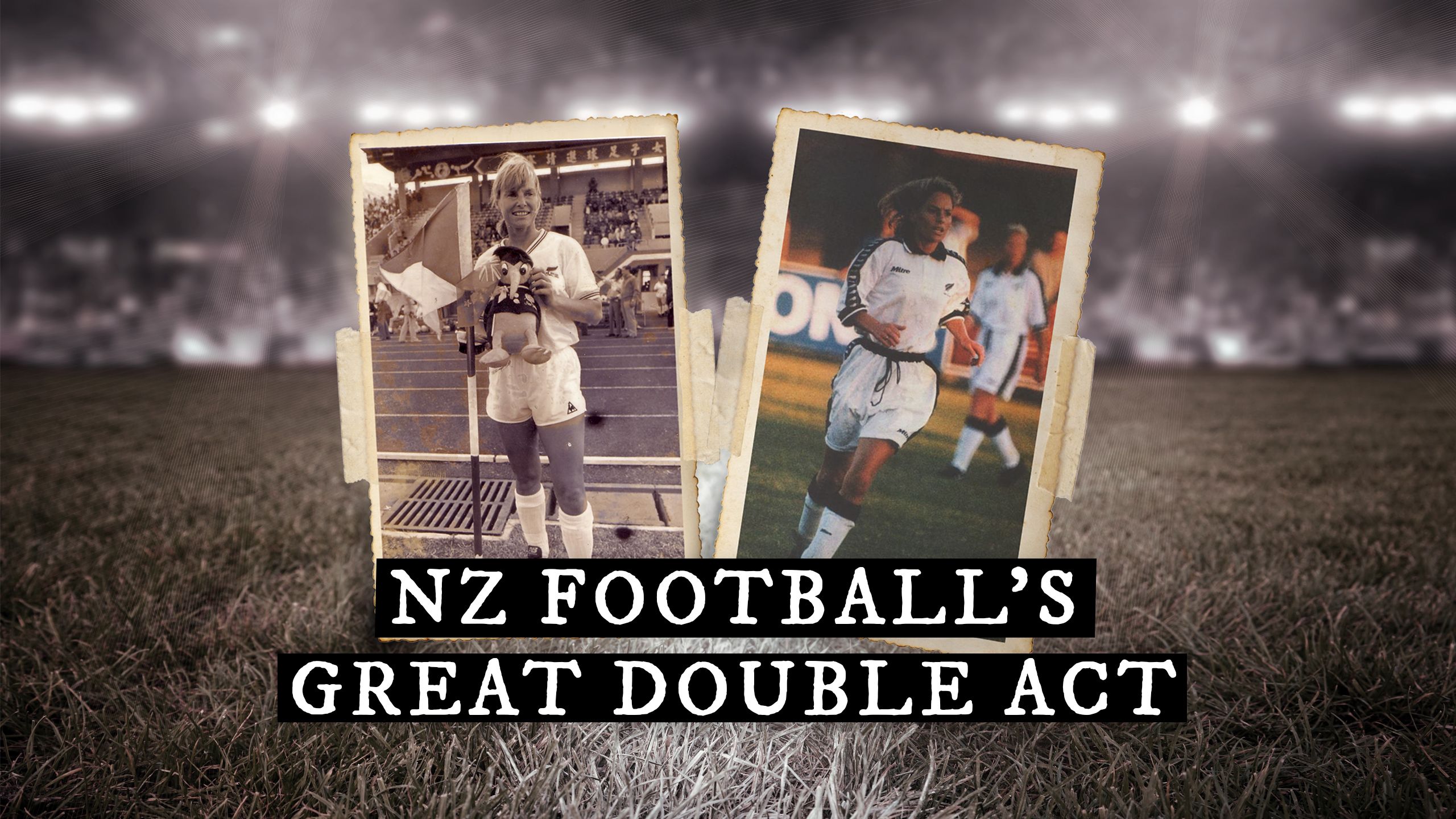
By Chris Rattue
As New Zealand gears up to co-host the 2023 FIFA women’s World Cup, we look at the adventure-filled yet troubled history of female football in this country through the eyes of its first family.
Aucklanders Barbara and Michele Cox are the first mother and daughter in the world to have taken the field together in international games. This includes teaming up in defence for New Zealand's only victory over the USA.
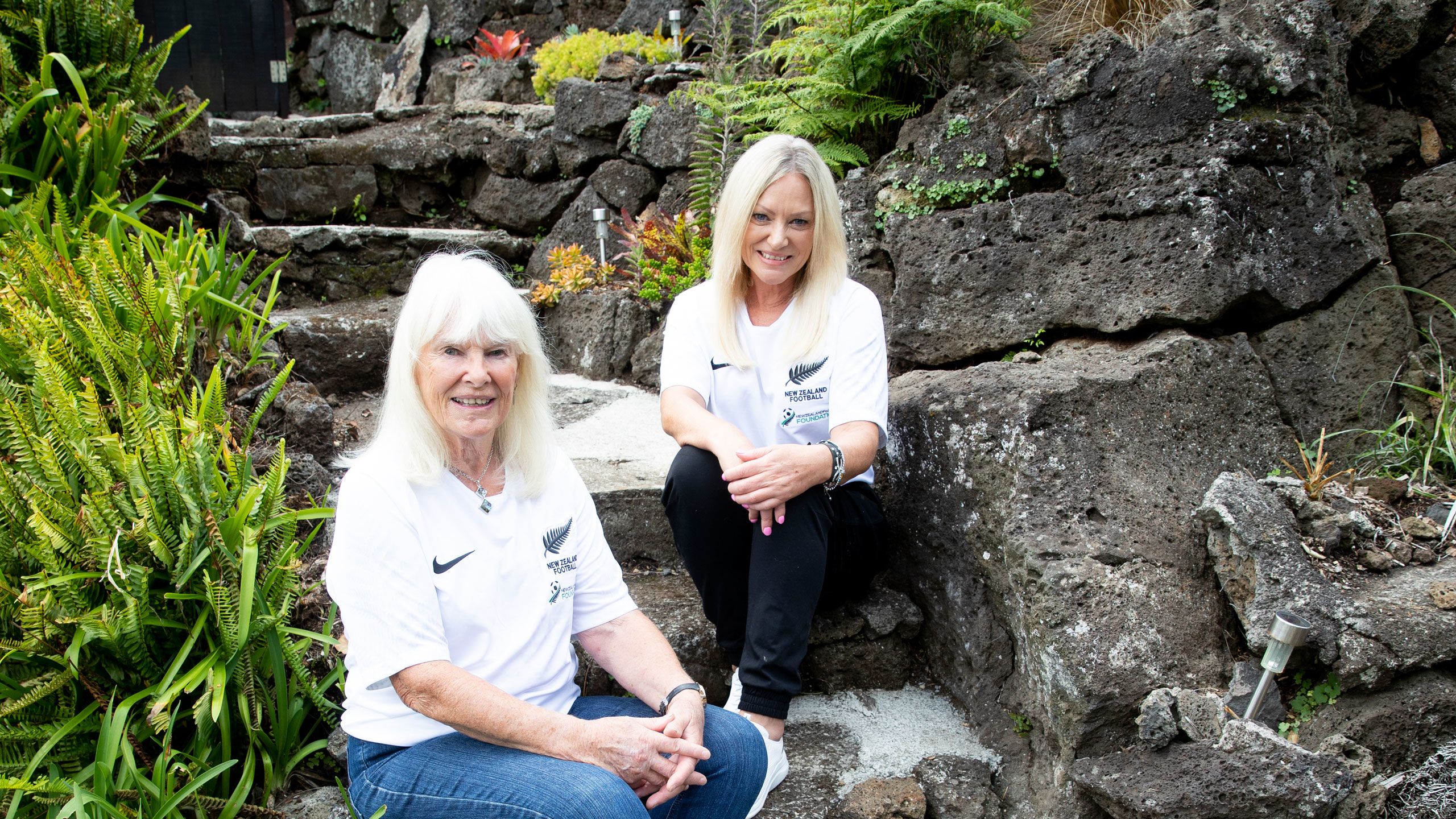
Barbara Cox (left) and Michele Cox were the first mother and daughter to take the field together in international football. Photo / Dean Purcell
Barbara Cox (left) and Michele Cox were the first mother and daughter to take the field together in international football. Photo / Dean Purcell
Michele was a teenager at the time and remains arguably the finest female player New Zealand has produced despite the professional advances in the game.
Indeed, renowned Kiwi football historian Jeremy Ruane once touted her as perhaps the best exponent of the beautiful game, male or female, to have emerged from New Zealand. It’s a hard claim to judge yet indicates just how good she was.
But the Cox family contribution to football goes so much deeper. Barbara’s late husband Roy, an Englishman she met on her OE, is regarded as the father of women’s football in this country. Michele’s sister Tara also played for the national team.
The Cox family football life has been remarkably multi-faceted on and off the field, from club football to the international stage. When the women’s game was in strife because of patronising sports bosses, Barbara turned guardian and activist, helping lead a human rights case to get it back on track.
She has even researched its history as part of her doctorate studies, discovering how efforts to start rugby, league and football for women in the 1920s were squashed by the establishment.
Michele went on to work for the world governing body FIFA, while Tara holds one of our most important Olympic administration roles.
They are a unique Kiwi sports family, without a shadow of a doubt.
Here is the Cox family football story, or as much as we can fit in.

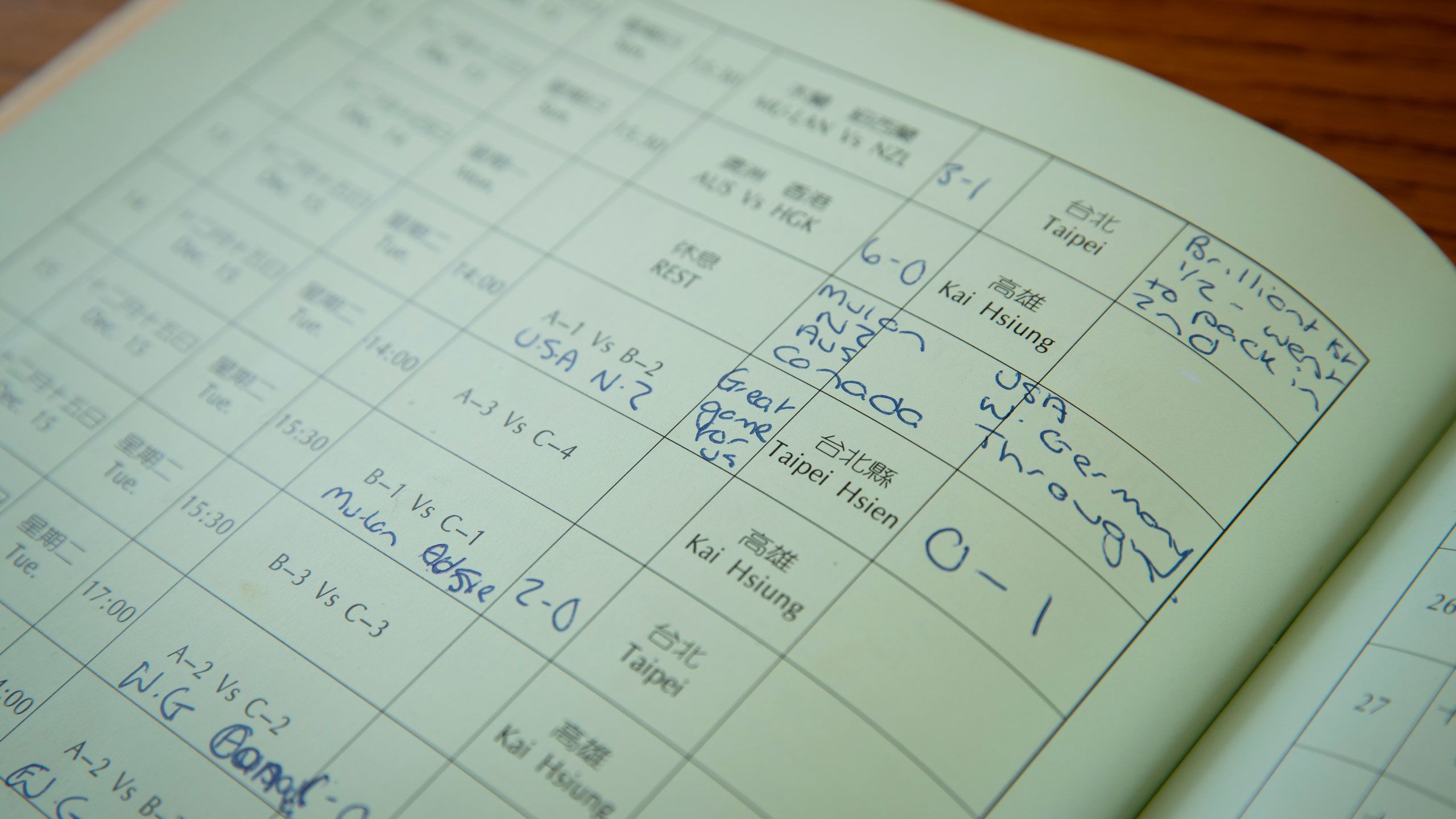
Rare evidence of New Zealand's historic win is from a Cox family scrapbook.
Rare evidence of New Zealand's historic win is from a Cox family scrapbook.
One game, one result, stands above the rest in the history of New Zealand women’s football. And it also stands as a testament to a golden opportunity lost.
There are records of women’s football being played in New Zealand in the 1920s, but it was another 50 years before it sprouted properly.
But the great adventure which began in the 1970s was ultimately cut short due to the attitudes of the day and blinkered administration in a male dominated world.
Indeed, New Zealand Football must stand condemned for the way it treated women’s football at a pivotal time about two decades ago. It has still to fully recover.
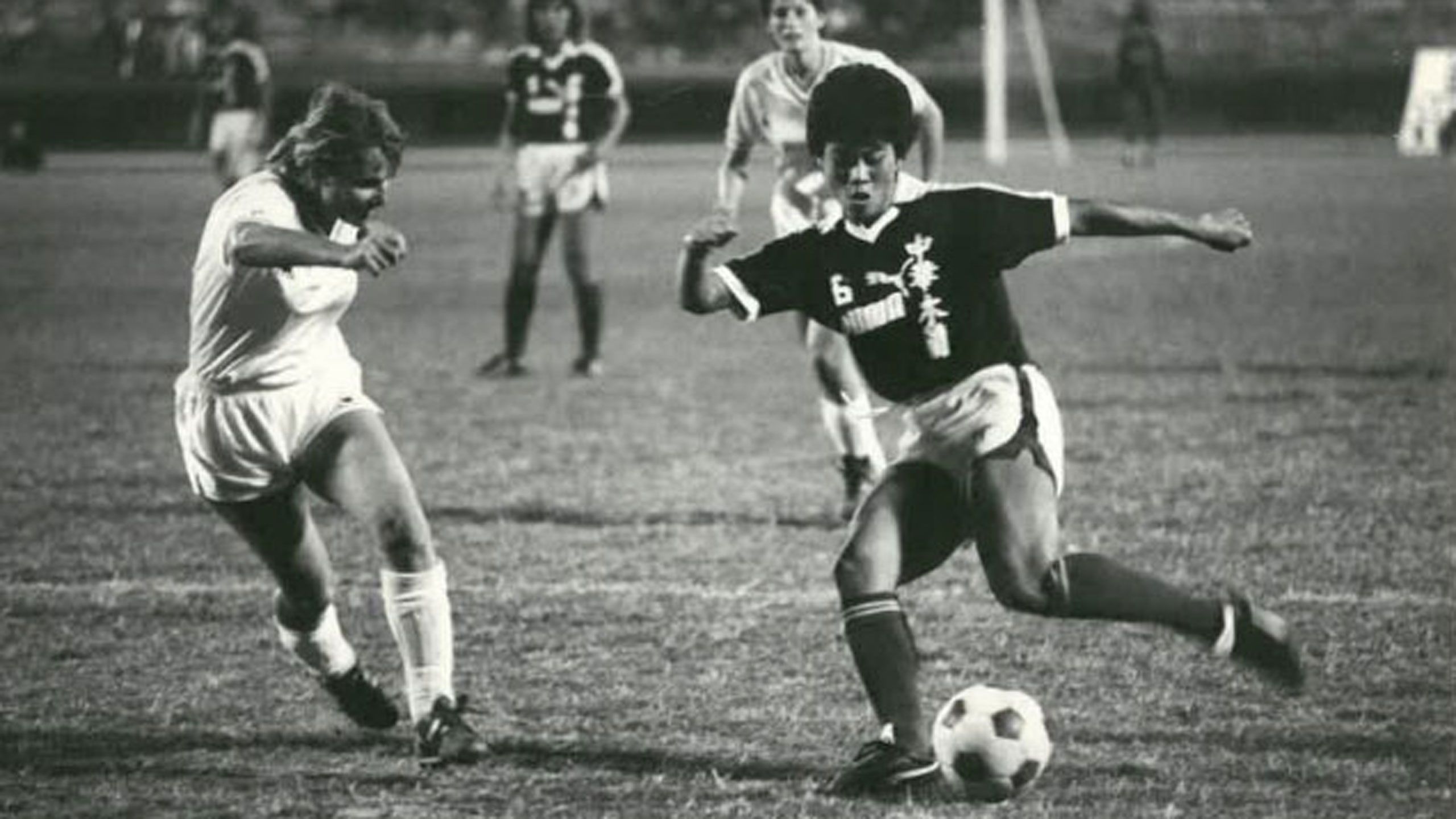
Barbara Cox hunting down a Mulan attacker during the 1984 tournament in Taiwan.
Barbara Cox hunting down a Mulan attacker during the 1984 tournament in Taiwan.
But on a special day in 1987, our women footballers could contemplate a glorious future, in the rather strange venue of Taiwan.
Taiwan hosted three world invitational tournaments during the 1980s, forerunners to an official World Cup.
And it is here that New Zealand scored its almighty 1 - 0 over the USA, a fledgling team which would soon become the international powerhouse.
The rock in the Kiwi defence that 1987 day was Barbara Cox, the 40-year-old veteran who was clinging on to her dream of playing in a real World Cup.
Alongside Cox was her 19-year-old daughter Michele - our first great female football star - who had shifted back to a central defender’s role for this particular assignment.
In 17 meetings since, the New Zealanders have never beaten the Americans, and been regularly trounced. Indeed, their record against the world's best teams is patchy at best, and their record in five World Cups a winless disaster.
The 1987 result is such an anomaly that when Michele Cox spoke to the Football Ferns about it many years later, the modern players refused to believe the story.
Longtime Football Ferns coach Tony Readings had called Michele in to give his players a better sense of the game’s history.
“They were actually shocked - how did you beat them?,” Michele says, recalling the team’s reaction.
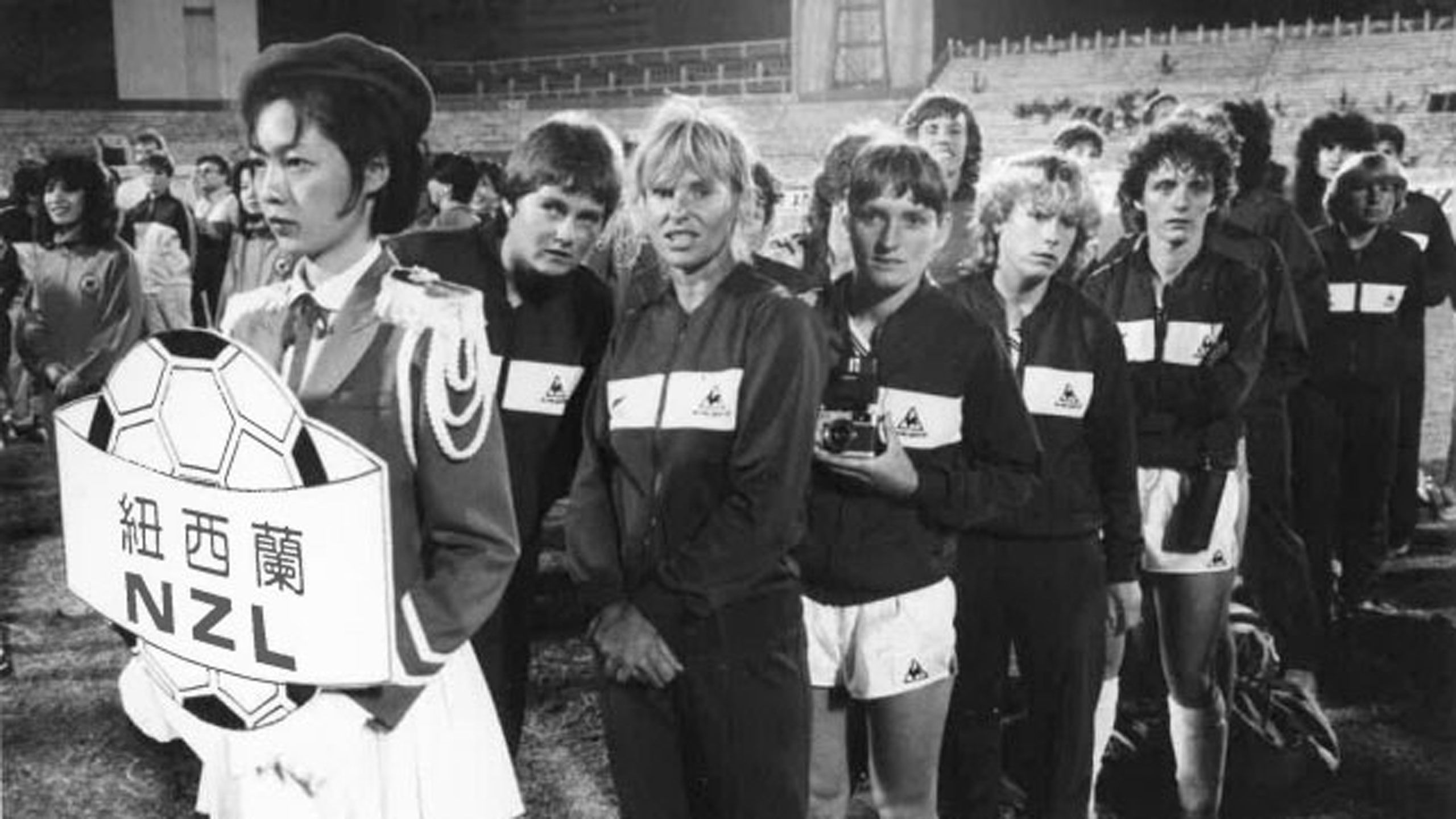
Pauline Sullivan, Barbara Cox, Lorinda O'Brynne, Michelle de Bruyn and Audrey Allen lead the lineup in Taiwan.
Pauline Sullivan, Barbara Cox, Lorinda O'Brynne, Michelle de Bruyn and Audrey Allen lead the lineup in Taiwan.
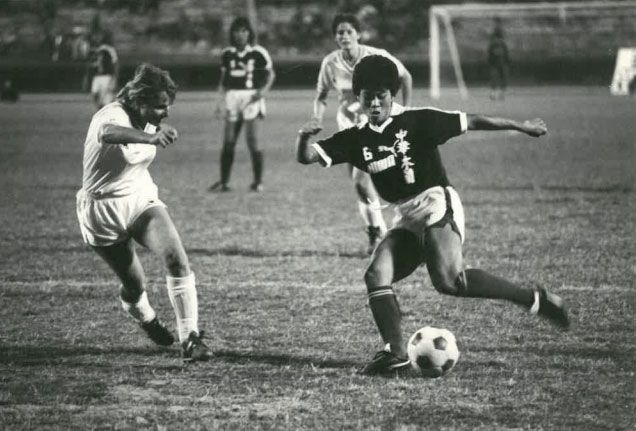


For most intents and purposes, women’s football burst into life in the 1970s, surrounded by – in hindsight – sexist although affectionate headlines, and a wonderful sense of adventure.
'Soccer’s definitely going to the birds’ was a headline typical of that age.
Women’s football in this country can be traced back to the 1920s, as can rugby league and union.
There are newspaper reports of a 1921 game between Wellington and Christchurch attended by 3000 people. Wellington wore gym frocks, ties and hats. Christchurch played in divided skirts.
But female participation in all three codes was quickly struck down by a misogynist establishment.
No one knows this better than Dr Barbara Cox, who as part of her academic studies pored over the main New Zealand newspapers from a three-month period in the early 1920s. She found 83 references on the subject in that time span alone, including stories, letters to editors, doctors’ opinions and much more.
In other words, it was quite big news.
“It was portrayed as too dangerous, that it would damage childbearing prospects, was unglamorous – a woman’s duty was to get married and have children,” Barbara Cox says of her findings.
“Women who played men’s sport wouldn’t be attractive to men. Questions were raised over sexual orientation.
“In the 1920s, some men were very anti, although others fought for women’s sporting rights by coaching etc.
“And some women were very anti as well…didn’t want their husbands involved. You can almost see the scenario at home…’it’s disgraceful, everyone will laugh at you’.
“The Education Board, churches, the YWCA, Auckland teachers training college…it was decided women should play sport, but also that the establishment should decide which sport. They chose netball.”
This mirrored the state of play around the world, where vibrant beginnings in the early 1900s were followed by women’s football being banned or severely hindered for much of the 20th century.
Barbara Cox is adamant that without this blatant interference, football would have become the dominant women’s sports code in New Zealand.
Netball, she says, was gifted the keys to the kingdom instead.
The women’s football re-boot apparently began in the 1960s when the partners of national league players arranged matches during an era of burgeoning feminism, awareness of women’s rights and a growing fitness movement.
The watershed year was 1975. In a burst of energy, the women’s association was formed, and a New Zealand team – captained by Barbara - set off for Hong Kong, where they won the first ever Asian Cup.
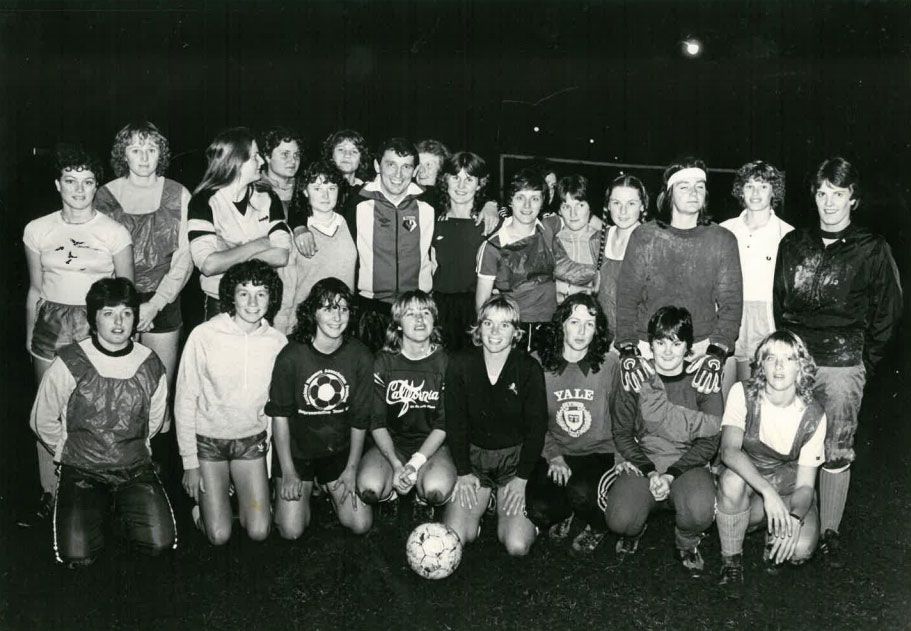
The 1990s England manager Graham Taylor held a training session with players in Auckland.
The 1990s England manager Graham Taylor held a training session with players in Auckland.
In what was typical of those cross-code amateur times, the New Zealand team included Marilyn Marshall who was also an outstanding New Zealand softballer. She scored twice as they beat Thailand 3 – 1 before a 12,000 crowd in the final.
The other goalscorer was Nora Watkins, who went on to be the only woman so far to have coached the national side. The goalkeeper was Carol Waller, another amazing driver of women’s football in a myriad of roles over many years.
Into the 1980s, female football aspirations were centred on tournaments in Taiwan, a country under martial law which used sport to stake an international identity in its battle with overlords China.
It made for a bizarre mix. The teams were transported from the airport in military trucks, the military ran the tournaments complete with soldiers carrying guns.
In line with how women’s football was regarded at the time, the officials and players were expected to provide entertainment for each other in a sort of variety show atmosphere. Video still exists of team bosses Roy Cox and Sandy Davie, an All Whites goalkeeper, doing a Dolly Parton-Kenny Rogers routine.
And out of these discordant Taiwan football carnivals came the miracle win over the USA.
Michele is still unsure of her official debut for New Zealand because of confusion over the A-international records.
Lining up alongside her mother in the defence against the Americans could be used as an iconic starting point though.
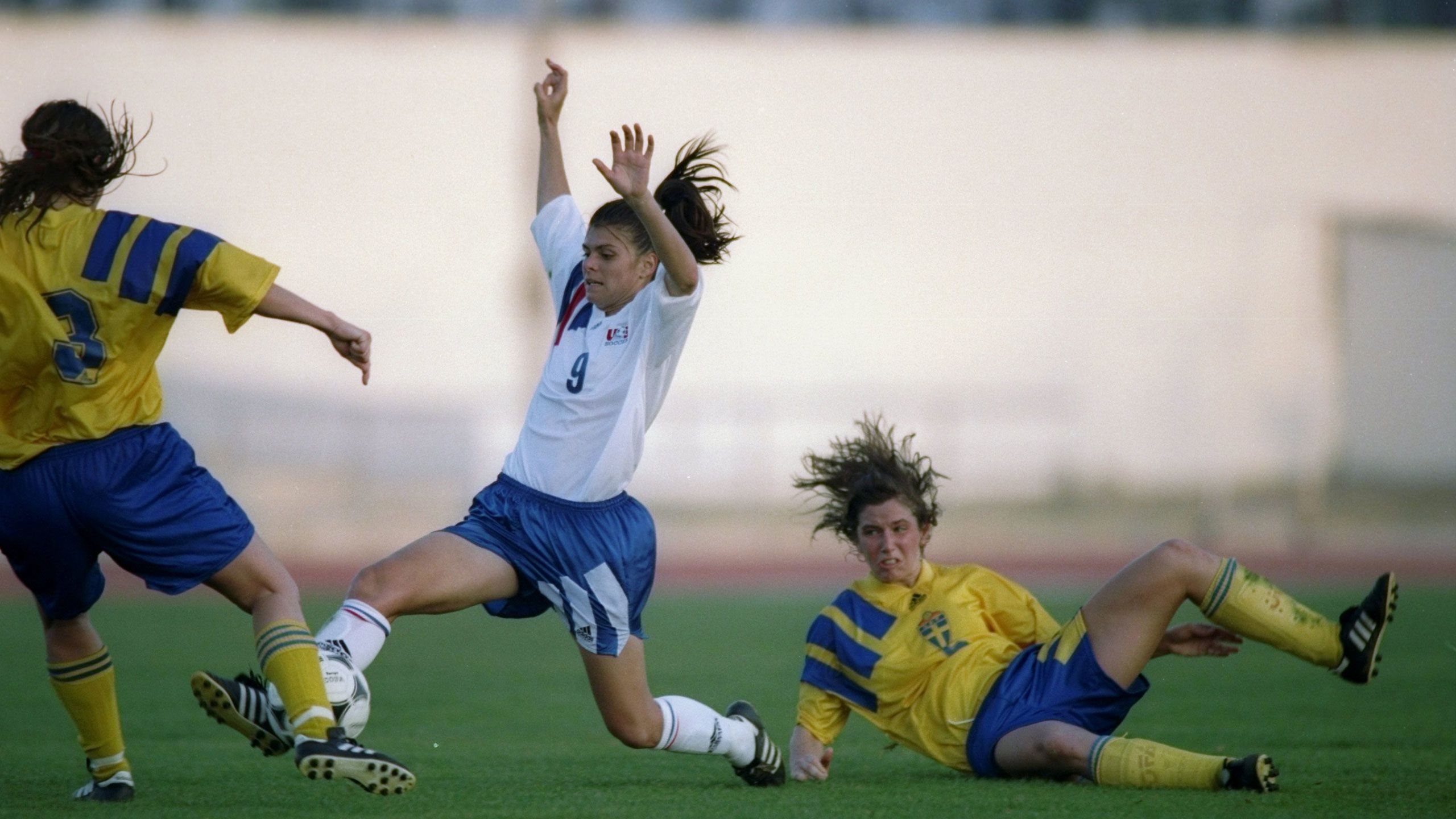
American football great Mia Hamm. Photo / Getty/AllSport
American football great Mia Hamm. Photo / Getty/AllSport
The fledgling American side included some young players on the rise to fame like the great Mia Hamm and Michelle Akers, a powerfully built and aggressive footballer, a future FIFA player of the century.
“She was built like players nowadays – I ran into her and went splat,” recalls Michele.
“We were defending most of the time but we weren’t overwhelmed at all.
“The Americans were warming up and we were on the sideline saying ‘look at those idiots, they’ll wear themselves out’. Our ignorance came from being isolated. “
Barbara provided the long ball which set up Ali Grant for the winning goal.
Barbara says: “It was just a game – we weren’t frightened at all. We never thought we were inferior.”

Unfortunately, the statistics indicate our national sides HAVE been inferior over the years. But why?
The really telling numbers concern the rivalry with Australia.
New Zealand initially dominated, winning 10 and drawing five of the first 21 encounters. Since the mid 1990s, the Aussies have obliterated the Kiwis.
This has been no accident. The Aussies were particularly riled at missing out at qualifying for the inaugural World Cup in 1991, after being outdone by New Zealand during the Oceania tournament in Sydney.
A piece of Australian skullduggery had helped them pip the higher rated Kiwis for a place in the 1988 FIFA invitational tournament in China, the testing ground for a proper World Cup. But the Kiwi women took revenge on the field when it came to qualifying for the inaugural 1991 world tournament.
After New Zealand thrashed Papua New Guinea, the Aussies needed to beat PNG by 16 goals and fell eight short.
“We went to the PNG team and said if you keep Australia out we will give you all our clothes, our strips – dad helped them with the coaching,” Michele says.
Australia’s response was a big investment in women’s football further boosted when, in 1993, the country was awarded the 2000 Olympic Games.
Sadly, New Zealand women’s football ended up going the other way.
A crucial point came in 1999 when, under pressure from FIFA and New Zealand sports agencies, the women’s association affiliated with New Zealand Football.
Broken promises followed, and Barbara was in a small group representing women’s football authorised to do something about it.
She had already taken a case to the Human Rights Commission when junior football in Auckland refused to allow Michele – who was in limbo between midget and senior women’s football - to play in a boys’ team. A 12 year fight to enable girls to play in boys teams ensued out of that.
The stakes were much higher this time.
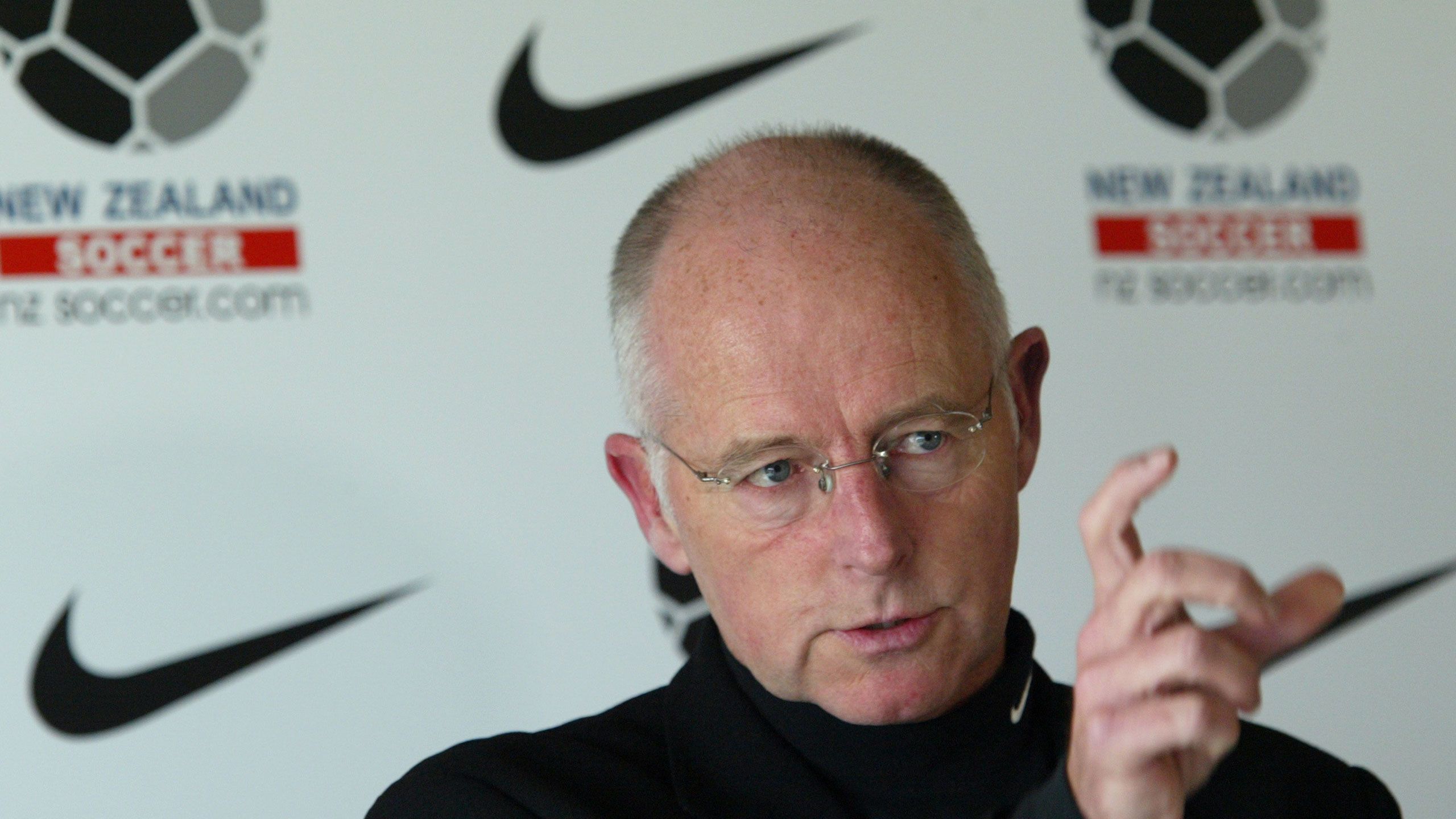
Former Football New Zealand CEO, Bill MacGowan. Photo / Dean Purcell
Former Football New Zealand CEO, Bill MacGowan. Photo / Dean Purcell
The man villain in this story, the way Barbara tells it, is the late Bill MacGowan, who was in his second stint as chief executive of New Zealand Football.
She pulls out a thick file with the documentation, and one statistic is particularly damning. The national body left the women without any international fixtures from 2000 to 2003.
During one lengthy period when the women were basically parked on the shelf - with only sporadic games - Australia played a whopping 63 internationals.
The national body “discriminated” against the women by failing to enter a range of teams in international tournaments Barbara says, recalling those grim days.
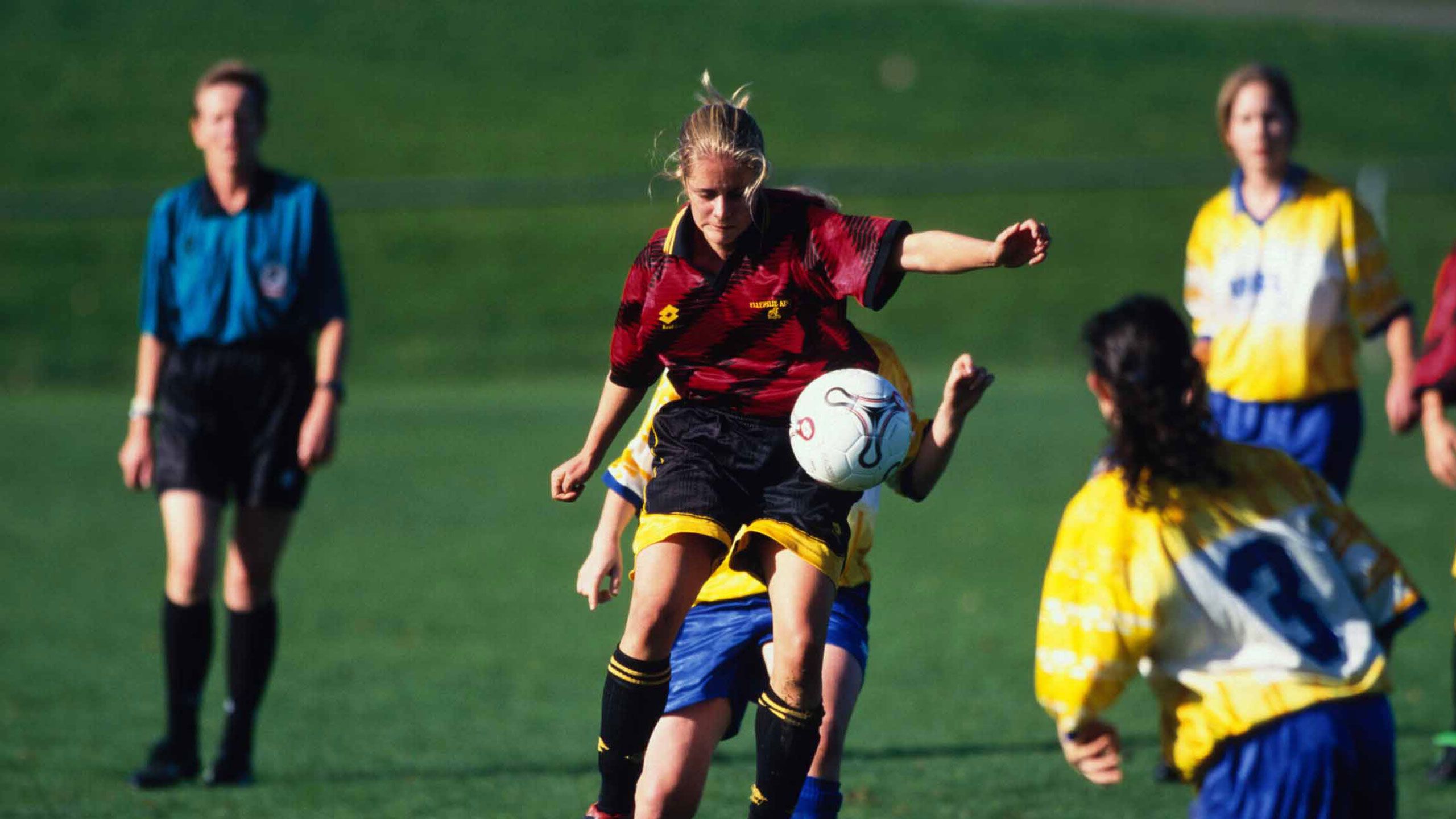
A 2002 women's club match between Takapuna and Ellerslie. Photosport
A 2002 women's club match between Takapuna and Ellerslie. Photosport
The game was treating the women as second rate. The overall attitude seemed to be there was no point in pushing the international cause because the Aussies would trump them anyway.
Bottom line: New Zealand Football money was there for men, not women.
Even a mediation effort was “unpleasant”.
“Bill MacGowan was not empathetic. A Human Rights case was our last resort – we didn’t know where else to go,” Barbara says.
In Cox’s view, things immediately turned around when Graham Seatter replaced MacGowan as NZF's boss.
“Graham had a daughter who played football,” she says.
The encouraging Human Rights campaign was no longer needed and it was game on for women’s football in New Zealand, including a successful bid to host the first ever FIFA under-17 World Cup in 2008.
The Cox football story and their drive to grow the women’s game here began in England.
Roy Cox - who passed away in 2013 – was a goalscoring forward at Brentford and in the Queens Park Rangers reserves, whose career was done in by a knee injury.
Barbara, from Hamilton, was a “naïve” Kiwi doing her OE, working at the Butlin's holiday camp in Somerset during the mid-1960s. Roy also worked there. A romance developed which was to change the course of New Zealand football history.
The family became extraordinary football pioneers during the 1970s in a movement which, 50 years later, has still to reach anything like its true potential.
Women's football certainly had its ardent supporters, but there was also a patronising attitude to overcome. The 1980s Sports Foundation boss Keith Hancox was even quoted as suggesting women's football might be nothing much more than a bit of a hobby.
In the Roy Cox view - as Barbara puts it - men’s football in New Zealand lacked the class to become an international force, but the charismatic Englishman thought the Kiwi women could be world beaters. And he had the personality to try and make that happen.
“Life was certainly never dull when Coxy was around,” is how football historian Jeremy Ruane described him in an obituary piece.
Women’s football had to battle against some influential detractors, but it also received backing from football luminaries/coaches such as Dave Farrington - a huge early influence and the inaugural 1975 coach - Sandy Davie, John Adshead, Kevin Fallon, Allan Jones, Doug Moore, Ken Armstrong, Dave Boardman, Maurice Tillotson and Roy’s great mate Harry Dods, the administrator, over the years.
But no man did more for women’s football than Cox.
He was the driving force, including as the national team manager/selector, although he realised the actual coaching was best left to others.
Cox - whose enterprises included running the canteen at football’s main stadium Newmarket Park - was also a big contributor to the men’s game, his entrepreneurial skills providing seed money for the All Whites’ historic 1982 World Cup campaign. But women’s football was his major passion, and he was fired by a pioneering spirit.
“He was the bane of mum’s life,” says Michele.
“He was always sneaking out buying boots for a player who couldn’t afford them, taking them places when they didn’t have transport.
“Mum would ask ‘where’s your money?’. He’d try and white lie his way out of it…then someone would turn up to training with new boots.
“He saw the injustice at the time, how much effort we put in, how we were treated. He was the biggest feminist out. He actually loved all women’s sport.”
Michele Cox - who like her mother earned a doctoral degree - has played and worked in football around the world. Her FIFA/UEFA governance and consultancy roles have included visits to more than 70 countries.
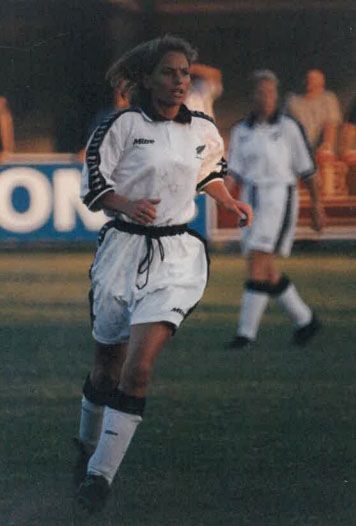
Michele in her oversized hand-me-down All Whites strip.
Michele in her oversized hand-me-down All Whites strip.
A remarkably diverse administration career has seen her rub shoulders with the likes of German chancellor Angela Merkel and tennis legend Martina Navratilova. It is a far cry from the days when she had to roll up the waist band on her too-big national strip, because the women were given hand-me-downs from the men’s team.
The 52-year-old now heads the Football Foundation, set up to ensure the $12m which came New Zealand’s way from the men’s 2010 World Cup campaign had lasting impact.
The foundation received $4m of that money, raised another $3m, and after giving out grants has a capital fund of $5.6m. Its current projects include backing an effort to fill the many gaps in New Zealand soccer history.
And a piece of New Zealand soccer history has come full circle in a way.
Michele is back in the old family home now, living with her mum, a very short walk from the former Eden soccer clubrooms which have been such a big part of their life.
The building is shuttered, a monument to club amalgamations, but if only walls could talk.
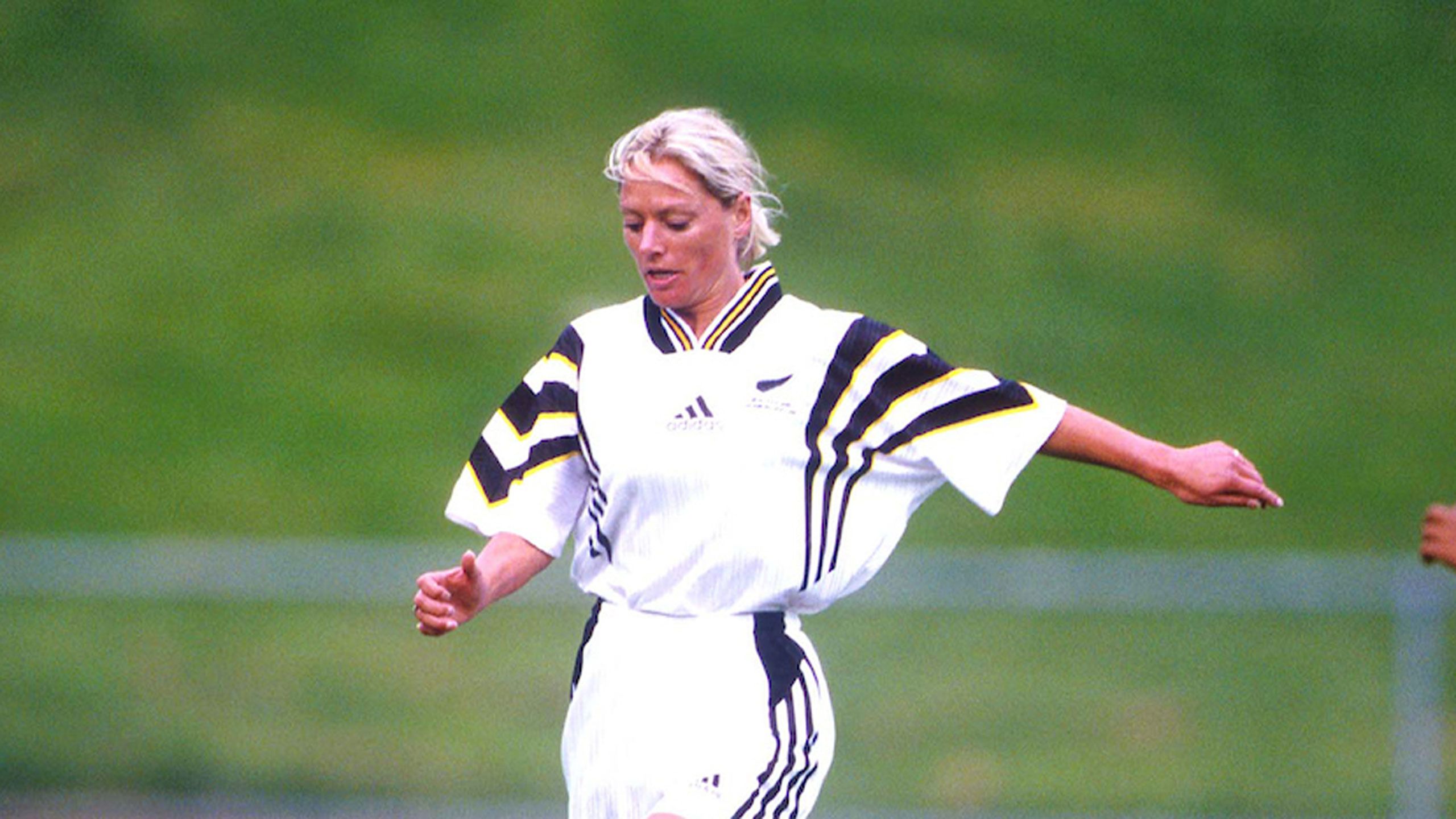
Michele Cox in action for the Football Ferns in 1998. Photosport
Michele Cox in action for the Football Ferns in 1998. Photosport
In the more romantic times of New Zealand soccer, some of the game’s most famous figures from touring teams partied at Eden and the Cox house. Names like Peter Reid, the England midfielder, tumble out when Barbara and Michele recount those fun-filled old days when they played exuberant hosts. England's only World Cup winning manager Sir Alf Ramsey, and a successor Graham Taylor, even ran coaching sessions for women in Auckland, posing in squad photos afterwards.
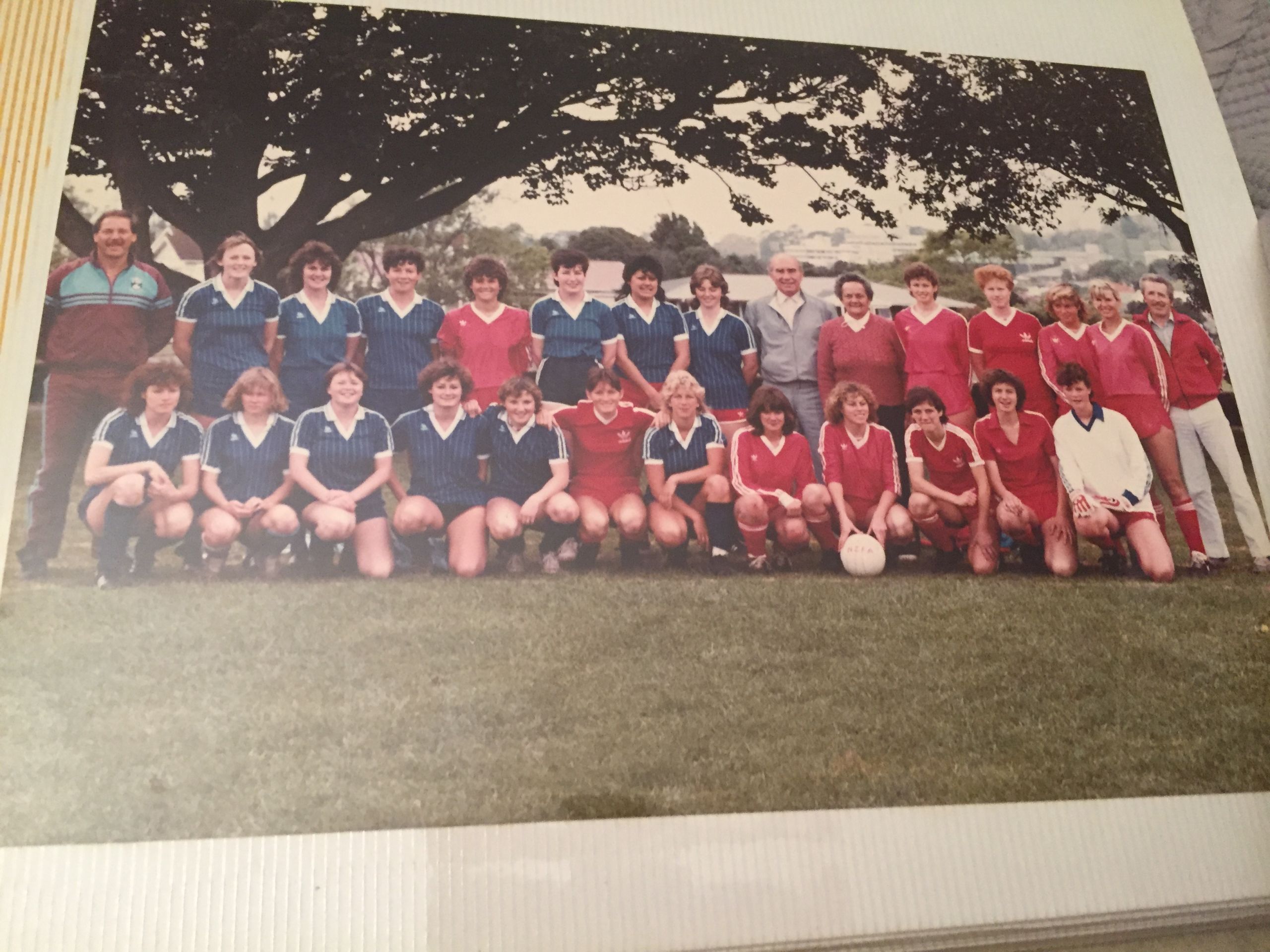
England manager Sir Alf Ramsey, grey tracksuit.
England manager Sir Alf Ramsey, grey tracksuit.
Those memories portray a strange mix of fun and frustration though.
If ever a story explains how adventure met misadventure in women’s football, it’s the one Michele tells of a tour involving games against the superpowers, the United States and West Germany, in 1998.
After warming up with wins over two Dutch sides, the national team continued on a tour schedule from hell.
They had to drive a couple of hours on the free day between matches against the Germans, so little wonder that a brave first showing was followed by a massive defeat at the second venue.
“Shattered”, they left the ground on a bus bound straight for the airport, and off to the USA.
There, in Washington, on the morning after their arrival, they played the Americans in 45C heat, the curtainraiser to a men’s international.
But this second match in New York was abandoned when a tornado struck, with the Americans leading by just 1 – 0 over the exhausted New Zealanders.
The Kiwi women were left to their own devices and signed autographs while the American team had armed sheriffs looking after them.
“This was after years of not actually having an international programme,” says Michele.
“We just had to fit in with everybody else…we were just grateful to play.”
Barbara and Michele’s frustration lingers to this day. Mention Australia’s top 10 world ranking and they grind their teeth over the Football Ferns being ranked in the 20s.
“If only New Zealand had got the same money Australia put in…we were one of the top teams in the world in the 1980s and we still should be,” says Michele.
Her words may have a new significance.
Australian football bosses this year launched a bid for $300m in Government funding, with a large part of it earmarked for the women’s game. Australian football wants to ensure the 2023 World Cup leaves a lasting legacy.

Parents and kids don’t always remember the past in anything like the same way.
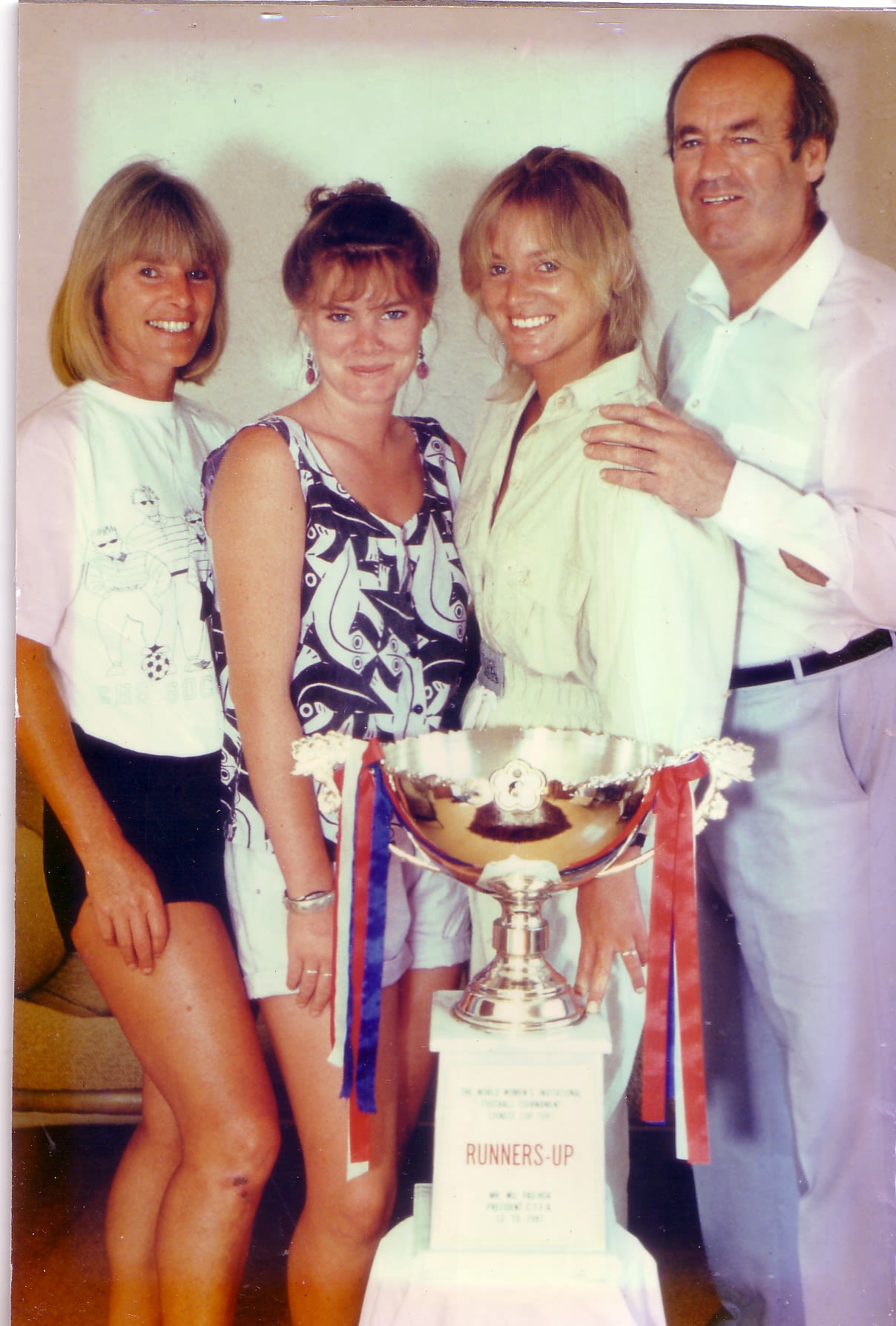
From left: Barbara, Tara, Michele, Roy.
From left: Barbara, Tara, Michele, Roy.
Michele recounts Barbara would call out ‘pass the ball darling’ when they were on the same teams.
“I was mortified by that,” she says. Barbara can’t remember this at all.
Now and then, at a party, they will catch up with past comrades, and reminisce. It’s almost always about off-the-field stuff.
“The funny parts,” says Barbara.
“Like…in the ‘80s you were expected to put on a concert item. A lot of time away from training and playing was spent practicing those items.”
It sounds like something from another planet, but the Cox football dynasty has impressively straddled many worlds.
Barbara, Michele and Tara – who also played for New Zealand – are women making a living in sport.
Barbara has headed the Bill McKinlay Park Trust whose achievements include installing an artificial pitch in 2011, while Tara Pryor is chief operating officer for the country’s Olympic programme.
This is a unique Kiwi sporting family which has fought so many battles for the sport they love. But there is some magnificent light at the end of the tunnel - the arrival of the World Cup in two years’ time.
“It will revolutionise sport for women in New Zealand,” says Michele.
“That’s why we brought the under-17 World Cup here – strategically it was the cornerstone in changing the perception of women’s football.
“That event did exactly what we wanted it to do – to change it from a kick and giggle grassroots sport to a serious, elite option.
“But we’ve still got some way to go in getting the very best athletes into New Zealand football, for them to see the potential of professional contracts with Chelsea or wherever, or getting an education with an Ivy League College in the States…the vocational opportunities.”
And Barbara, the grande dame of New Zealand football, has lost none of her fighting spirit, nor the football dream which took hold 50 years ago.
“After the under-17 World Cup, I was doing a heritage project for NZF and FIFA, and we did a lot of interviews and found the mindset had changed,” she says.
“A lot of men came up to me afterwards and apologised, saying ‘I never thought I’d say this but that women’s football was good.’
“These were dyed-in-the-wool men who couldn’t stand women’s football before.
“Imagine what they will think after they see players like Megan Rapinoe or Marta. They will see what the women are capable of.”
The 73-year-old Barbara Cox would love to be a 2023 World Cup ambassador. Who on earth would deny her that?